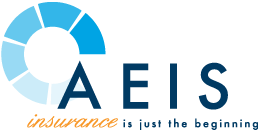What is Open Enrollment: Tips for Employers

For an employer, few things are as important as properly handling the open enrollment process when it comes to
employee benefits and healthcare. But what is open enrollment, why is it important, and how do you make sure that everything goes off without a hitch? Thankfully, this isn't necessarily difficult, but it will require you to keep a number of important things in mind along the way.
What is Open Enrollment?
As the name suggests, open enrollment is the period of the year - typically during the fall - when employees enroll in health and
ancillary insurance plans that will carry them through the next employer’s plan year or calendar year.
How Does Open Enrollment Work?
During the open enrollment period, a few key things will happen.
First, when offering group health insurance plans for your employees, as the employer you will work with your employee benefits broker to determine if any changes or modifications should be made to your company’s employee benefits plan to either make it more robust or to enact cost savings. Such as changing carriers, adding or removing medical plans, or adding or changing ancillary carriers or plans, such as dental, vision, group life, short or long term disability.
Once you have decided on your employee benefits package for the upcoming year, it is time to inform your employees about any changes they should be aware of for the coming year. There will likely be some kind of "all hands on deck" meeting communicating any changes in policies, at which point employees can enroll for the first time, waive coverage, change between plans, and add or remove eligible dependents.
How to Hold a Good Open Enrollment When Your Employees are in Different States
If employees are spread out across multiple states (as is getting increasingly common these days with hybrid working situations), all the best practices of open enrollment still apply - albeit on a much larger scale.
There should still be some type of "kickoff" event that will let people know what is happening and what their options are, only it should be held virtually, so everyone can attend. A benefit of virtual online enrollment meetings, whether the workforce is distributed or not, is that some video conferencing services allow you to record meetings so that the open enrollment presentation can be saved and reviewed by employees with their spouses at home or for future new hires to learn about the company's benefits. All ongoing communication needs to happen via multiple channels like email, text messaging, and even social media to keep everyone informed at all times. If you stick with print communication you run the risk of alienating anyone who isn't in the home office.
How Do I Make Open Enrollment Easier?
By far, one of the most important steps that you can take to make the open enrollment process easier involves embracing open communication as early as you can.
For many employees, one of the major hurdles of open enrollment has to do with the fact that it is A) too short, and often B) too late in the year. In an effort to help them make the most out of this period, be sure to communicate information as often as you can.
Make sure they know when open enrollment is. Make sure you're using not just printed materials to communicate but also email and even text messages as well. Another way to make communication of benefits easy for employees can be to have an online benefits enrollment platform like Ease or Rippling. Benefits enrollment applications themselves can be rather intimidating or exhausting to review, but having employees enroll into benefits using an online enrollment platform tends to be more straightforward and less daunting. In addition, most online enrollment platforms also house key information such as benefit plan details as well as required documents like "Summaries of Benefits and Coverage" (SBC's) or ERISA notices, all of which is then at the employee's fingertips as they make their benefits elections.
All of this will go a long way towards keeping people in the loop during open enrollment, which in turn will help them make the best decisions possible given their situation.
Along the same lines, another way to make the open enrollment process easier is to take a proactive approach to it in terms of education. Another major pain point that a lot of people have comes down to the fact that open enrollment (and often healthcare in general) are too confusing. Between HMOs, PPOs, and EPOs, and various tiered plans, a lot of people aren't sure what the differences are and which would best fit their own needs.
Therefore, make sure that your human resources department (or someone else within your organization) and benefit advisors are available to act as a trusted resource to answer any questions or address any concerns that people might have. The more they understand open enrollment, the more likely they are to embrace the entire process.
Again, this level of education and support must be extended to special circumstances, too. Many people assume that once the open enrollment window closes, they're unable to make any change to their healthcare-related decisions they've made for another year. That isn't necessarily the case. Special situations, known as a Qualifying Life Event (QLE), like the birth of a child, a spouse who has lost their healthcare, starting a new job, marriage or divorce, and more all allow people to make changes throughout the year within 30 days of that QLE. You need to make sure that employees are aware of this and that you help them make the most out of these special circumstances if they do occur.
Finally, many people feel that the open enrollment process is just too impersonal. Fixing this issue is another way that you can help things go as smoothly as possible. You should encourage people to reflect on their own situation on a case-by-case basis because everyone is different. If your employees have questions or concerns about what plans to pick based on health history or chronic conditions of them or their dependents, have them speak with your benefits advisor/broker team so they can assist the employees without exposing you or anyone in your organization to protected health information of fellow employees and their family. There is no "one size fits all" approach to the open enrollment process and treating things like there is only leads to potentially significant issues down the road.
In the end, open enrollment is one of the most important periods in any business' year - both in terms of leveraging an opportunity to increase employee engagement and with regard to making sure those employees are taken care of. Another way to help make sure things go as smoothly as possible involves contacting the team at AEIS at your convenience.
At AEIS, we have years of experience helping organizations all across California (including the San Francisco Bay Area) with employees nationwide address these and other benefits-related needs. We're prepared to support you through the entire open enrollment process, making sure that you're able to enjoy all the benefits of it with as few of the potential downsides as possible.
If you'd like to find out more information about open enrollment tips for employers, or if you know that this is something you need to address in the near future but aren't sure where to begin, please don't delay -
contact the team at AEIS today.



